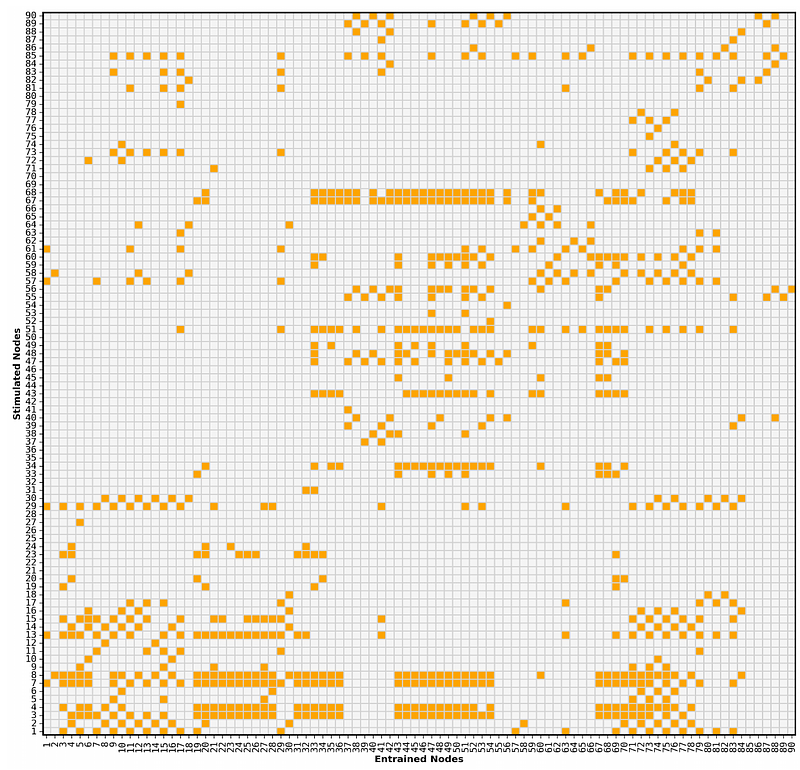Frequency-Dependent Neurostimulation in Whole Brain Network models

Frequency-Dependent Neurostimulation in Whole Brain Network models
Otero, M.; Poo, E.; Torres, F.; Mendoza, C.; Lea-Carnall, C. A.; Weinstein, A.; Guevara, P.; Prado, P.; Cabral, J.; EL-DEREDY, W.
AbstractBackground: Neuromodulation with electric, electromagnetic, or sensory stimulation presents a complex challenge in optimizing stimulation parameters to achieve specific physiological, cognitive, or behavioral outcomes. The effectiveness of stimulation depends on factors such as stimulation frequency, target location, and individual brain network architecture, yet a systematic framework for predicting stimulation effects is still lacking. Methods: We deployed a coupled oscillators Kuramoto model informed by the human structural connectome, known to generate spontaneous metastable oscillatory modes with dynamical features resembling real M/EEG oscillatory activity. We simulated the effect of the stimulation at the peaks of its oscillatory modes in different brain cortical regions, using different structural connectivity properties to emulate inter-individual variability. We investigated how periodic stimulation influences network oscillatory activity and functional dynamics by identifying brain regions that synchronize with the stimulation frequency. Results: Neurostimulation outcomes are functionally selective, and vary depending on both the stimulation frequency and the structural connectivity of the stimulated region. Nodes with the greatest sum of adjacent connection weights facilitated broader network engagement, while variability in structural connectivity led to specific entrainment patterns. Entrainment exhibited an inverse relationship with frequency, such that lower-frequency stimulation propagated more extensively across the network, while higher- frequency inputs produced more spatially confined effects. Conclusions: Our computational modeling aligns with empirical findings on oscillatory communication, demonstrating that network-based approaches can enhance neurostimulation selectivity by incorporating individual structural connectivity and the frequency-dependent nature of entrainment. These results support a model-driven framework for personalized, context-specific stimulation, advancing the precision and predictability of neuromodulation strategies.